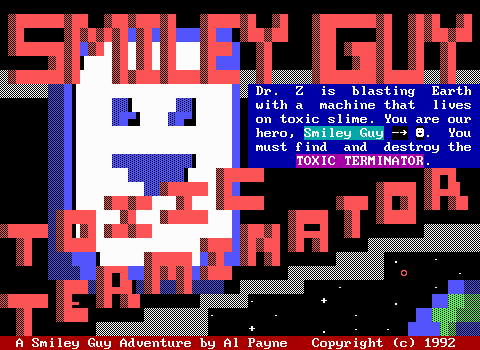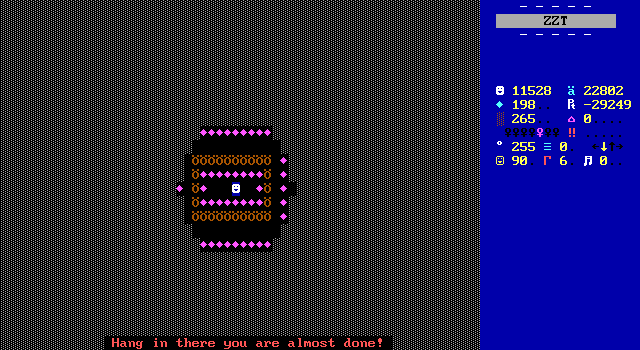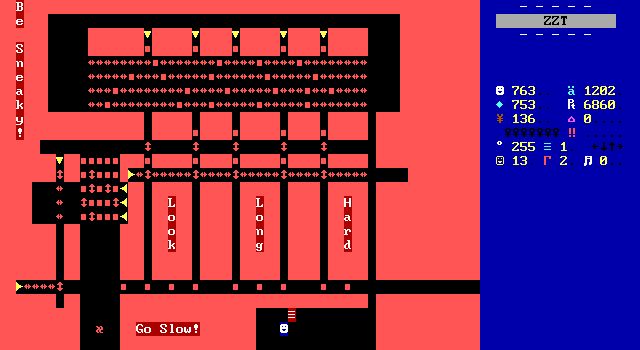
The pitchfork itself is locked up on a board that looks like Town's bank, but plays a bit differently. That "197" found in the zoo won't help here. In fact, there aren't any numbers for a combination.
It instead opts for something to logically untangle. By pushing a few rows of sliders to create a column of boulders, the upper pushers will move downward and make a path for the player to reach the goal.
These designs are more difficult to make than they look. I did one as the final puzzle in The Treasure of Captain Cutlass, and can remember having to tweak the geometry a number of times to both ensure players can't skip half the puzzle and that there actually is a "puzzle" aspect. If there's no failure state, it's just busy work.
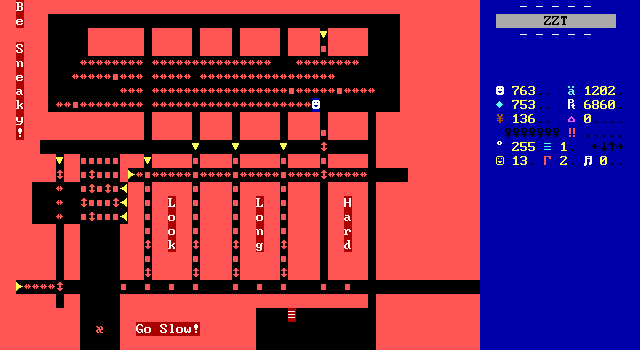
This one occupies a space where I'm not sure if it's broken, or I'm just not doing it right. In my initial playthrough I managed to get the leftmost column freed up enough that I was able to just enter the last section freely.
Going back to it when it came time to write this article, I was able to get all the columns lowered, but if you do lower all the columns, then a horizontal pusher blocks off the path back to the exit. It may very well be that what I did the first time is the intended solution as it actually works.
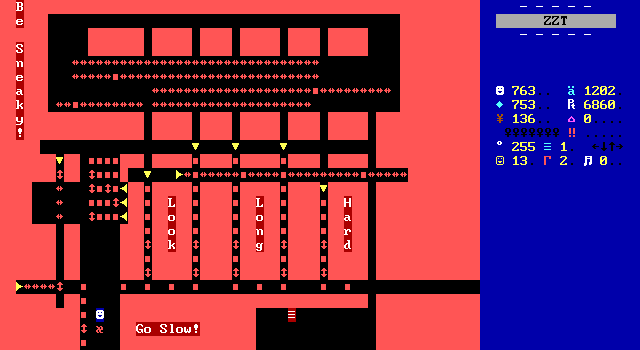
The final mechanism can also pretty much be ignored entirely. Just pushing down on the first column lets players reach the goal and leave at their leisure.
The goal is that ligature, which just so happens to be the stolen golden pitchfork. It is notably not golden, nor does it look very pitchfork-y, though for a single-character object, I'm not sure what I'd have used.
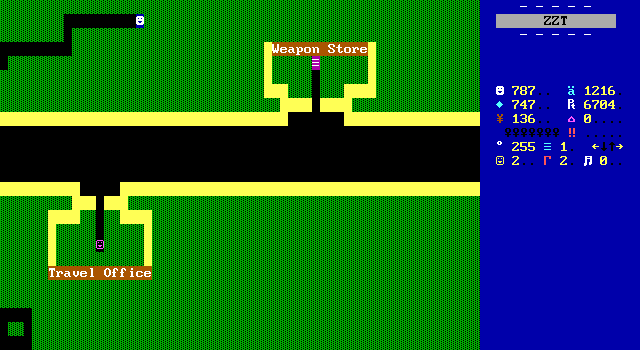
When playing "guess the correct passage" I didn't actually get lucky and find the pitchfork board with my first of many red keys. I got yanked back to the start of the game and figured it would be a good time to use the cow face board to explore the area outside of main street.
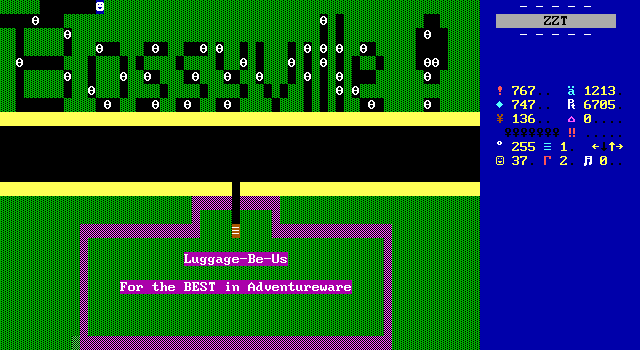
There are a few ways to get onto this path. The cow face is an obvious choice. Alternatively, some of the buildings are made of breakables that are easy to shoot through. Lastly, most boards that are a part of the MacDonald Mill and Dell Dairy areas of the game tend to connect back to main street. The mill connects both ways, so exploring and winding up back on the main road isn't an issue. For the dairy, the connection to the street is one way, which can lead to a lot of wasted time.
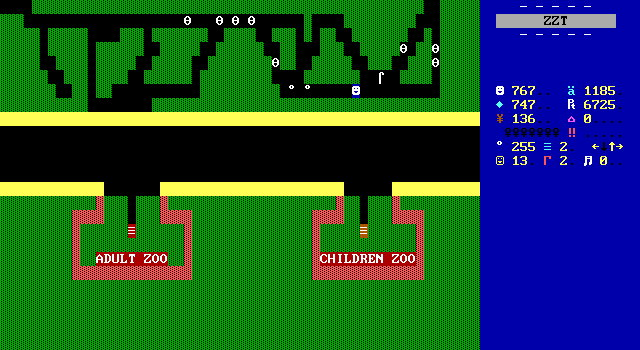
Your ability to get here isn't an error. This funny looking cane is evidence that Shapiro and Babyak were well aware players might end up on the wrong side of the road. This object isn't anything essential, serving a purpose instead as an Easter egg to reward players for finding their way above the street. The lower side has nothing of interest, and only connects south at the far end, making it a way to get to Dell Dairy without the key and nothing more.
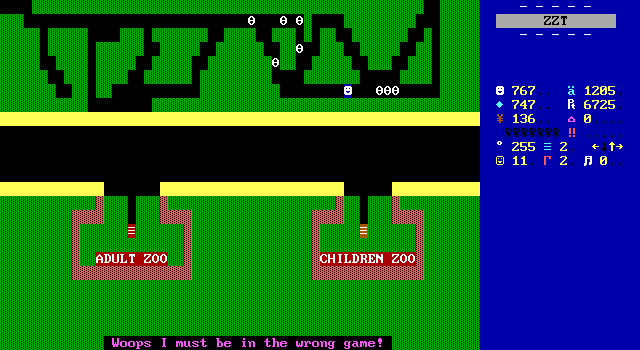
The "cane" is revealed to be a whip from the Kroz series! Cute. It provides twenty ammo and nothing more
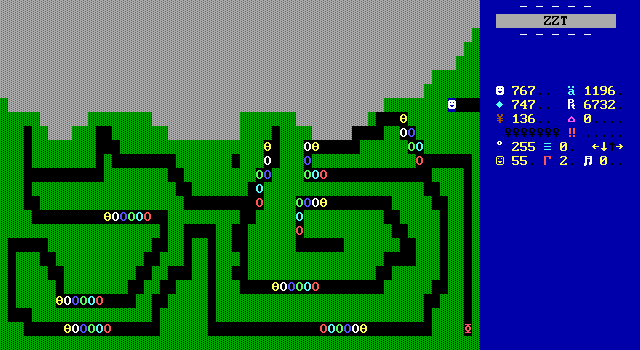
Having gone full circle, I returned to the mill area to visit the bank that MacDonald was indebted to. The path to Lefty's Loans is again pretty tame. These centipedes are at least somewhat in the way, forcing players to fight, or at least creatively clear their way through the forest.
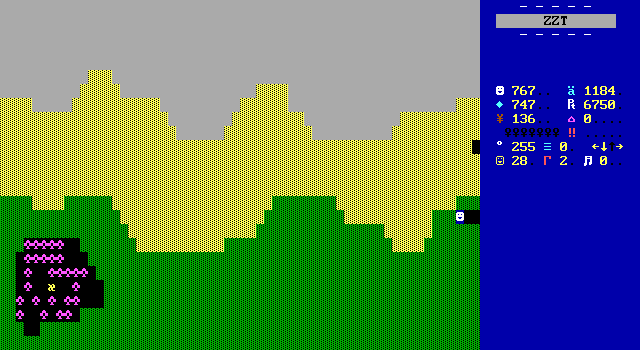
It's more engaging than something like this at least. Far too much of Inn of the Cow is the player deciding when they want to be in danger, often with no reward to boot. If I didn't already have the golden pitchfork and also somehow knew that was going to be used for the pitchfork, I could see this being a decent way to deceive the player into thinking they had found the item.
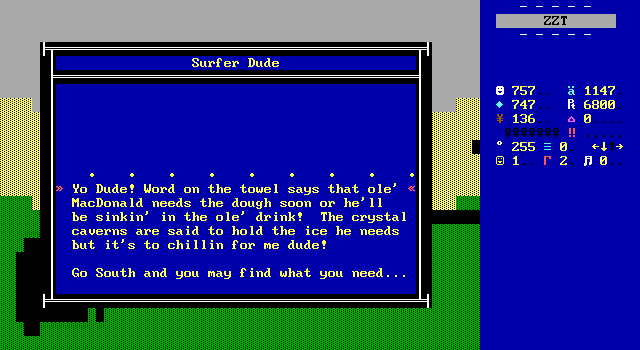
This time the character is actually a person. They are a classic 90s surfer stereotype character that suggests heading to the crystal caverns if you want to save the farm.
They incorrectly say to head south to find them. Do not listen. South of here is main street. The actual crystal caves are southeast of the dairy. Fortunately this is an instance where you can just head back north to where you were if you do opt to take the advice.
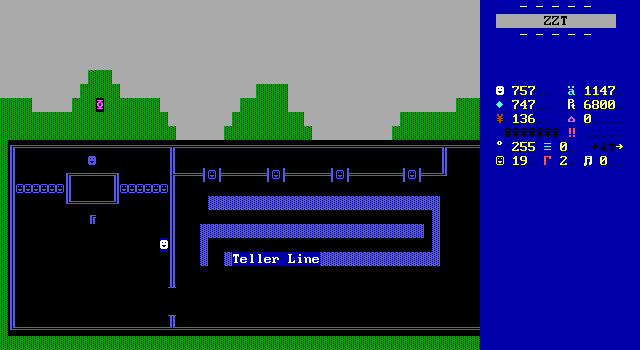
Lefty's loans is a two board building where players are warned to hold on tight their wallets and gems. Our villain is a man at a desk with paperwork. Relatable.
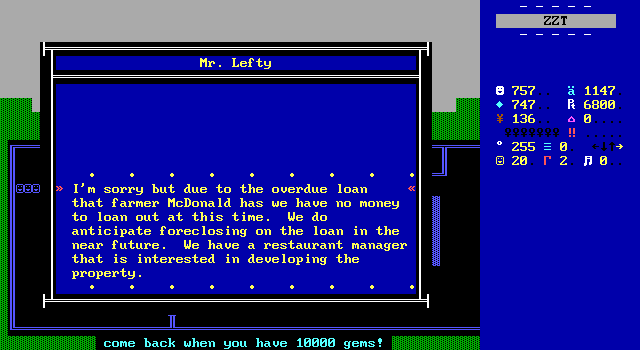
Lefty doesn't have all that much to say. You can either volunteer to pay off MacDonald's loan, or you can be denied to take one out for yourself. It makes the entire trip out here a waste of time.
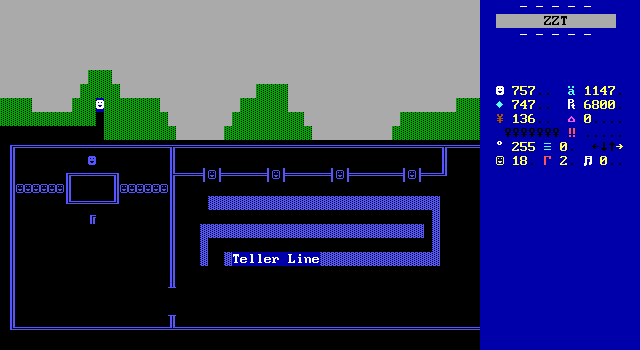
Not as much of a waste of time as leaving the building and going around to find out what that scroll on the lake has to say. It's blank! Not even in a joking manner! It's safe to say at this point that this game isn't a test of dexterity or puzzling solving. It's a test of patience.
All of this was a detour to my getting the pitchfork. I had a heck of a time remembering that to get back to the room with all the red doors I had to go to the mill, all the way east to farmer MacDonald, south to the green "purple" board, and then north from the board with all the red keys.
It didn't actually need to be that way. I wanted to finish everything in the mill before buying the vacation to the dell dairy. Little did I know that I had already been there. "Purple" takes you there. Had I continued north rather than start unlocking doors, I'd eventually hit the other side of main street.
In the event that you do play this game, I highly advise buying the key regardless. The cost in gems is well worth the shorter trips. - picking the third vacation package that gets you both keys. Having to navigate back onto the street by entering from "outside" or taking the long way through the farm and "purple" green board is tiresome.
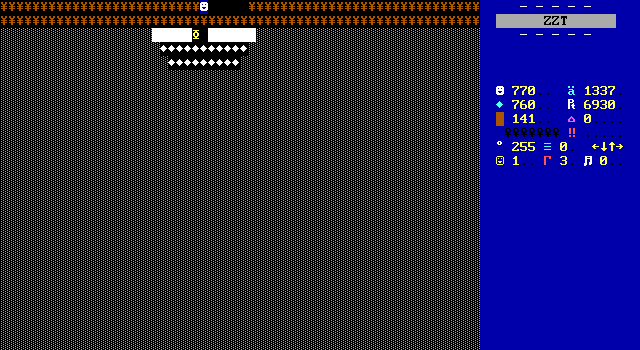
It's not like you'll be short on cash even if you do purchase the key directly.
Once you head east and south of the milk jug board, players will discover the crystal caves NPCs having been telling them about. With the lights off, it doesn't look great.
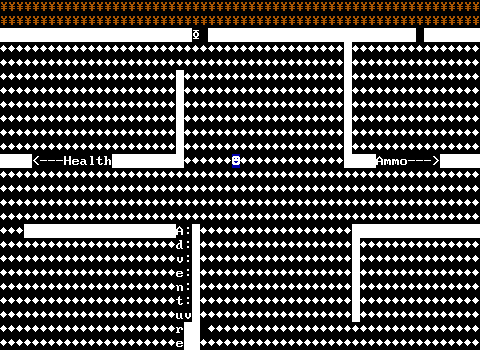
With the lights on though, yikes. The caves are big rooms that are primarily flood-filled with goodies.
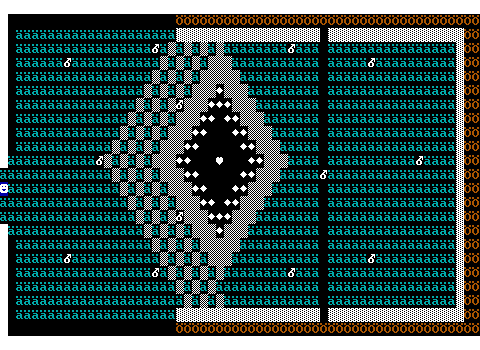
The ammo board is much the same. A "Courageous Heart" in the middle provides 1,000 health. The polar bears begin to appear here, very much out of the way.

The adventure board is another manual redraw with minor alterations in the process. It looks very silly in the darkness, since the torches are always visible.
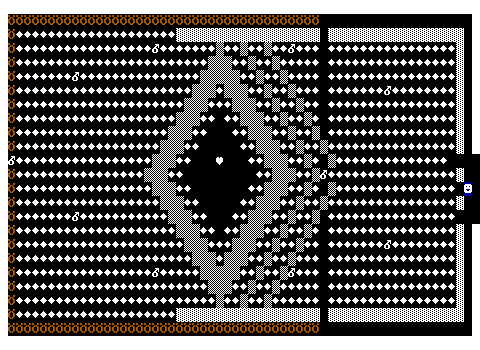
And the gem board is a flipped redraw of the ammo board.
Keep in mind these boards are all dark normally, so actually taking the entire thing in requires some effort. More effort than I feel was put into making the boards in the first place.
In fact... with everybody telling me I needed to go to the caves to find the money needed to pay off the loan, I began to get a real sense of dread. Was I expected to actually collect 10,000 gems? Boards that had them were loaded with them. The zoo had duplicators for infinite gems. These boards were tacking a few thousand onto that if I dared to collect them...
Look, we all get that this game has quite a number of issues that make it tough to play. Surely, I wasn't supposed to get the gems in the most agonizing way possible?
Rest assured, you do not have to pick up 10,000 gems. The heart on this board is a "Healthy Heart" which provides not only 1,000 health, but gives a convenient lump sump of 10,000 gems.
• • • • • • • • •
Please take my massive health and save
farmer McDonald!
• • • • • • • • •
...but I don't have a screenshot of that.
Because I am a fool that did give up on this game. I saw a pattern of boards filled with items, remembered the zoo's duplicators, and had hundreds of gems already. When I saw this board was more of the same, I panicked. I did not bother picking up the heart. I did not need any more health. I needed gems. I left the caves and began to hunt for any locations I still hadn't been to in hopes that I would find a lottery ticket or something, but (incorrectly) knowing in my heart that I wouldn't find the money in the form of an object.
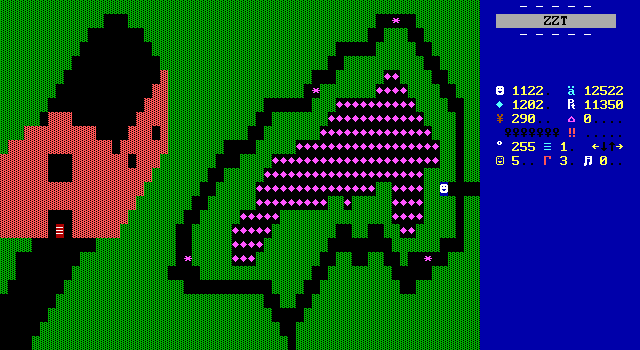
Heading west, I found another large patch of gems, fueling my fears. Why else would there be so many gems everywhere?
At least the barn looks lovely. Aside from needing to finish the roof.
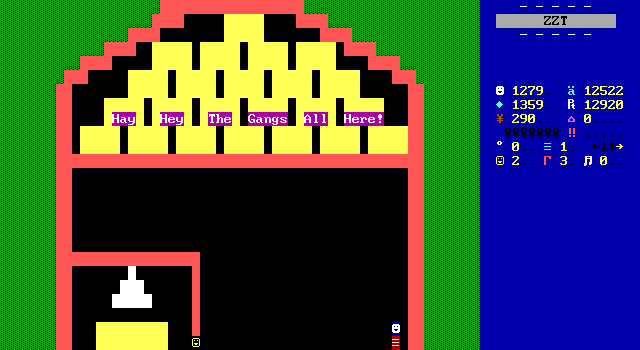
The wise man inside asks you to give him the golden pitchfork if you have it.

In exchange, he gives you a magic amulet and also... changes everything on the board into gems, so you can grab another thousand here.
Listen, what's about to happen is ultimately my fault, but it's not entirely my fault, right? You have to admit, the game really wants you to pick up gems by the thousand right? A dark room that with limited torch light seems identical to another isn't going to give you gems right?
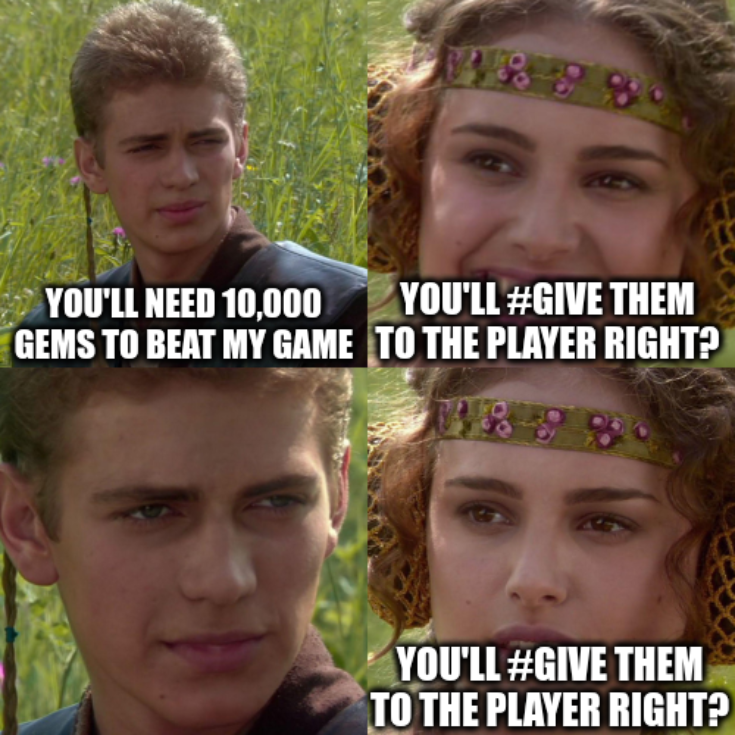
So I went to work. I headed back to the zoo, parked the player under gems, set the game speed to maximum, and held up.
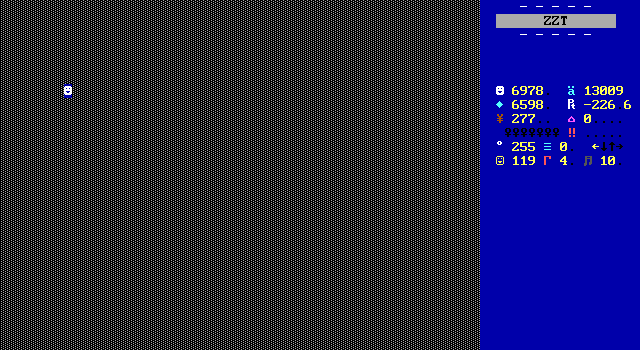
The score rolled over to -32,000.
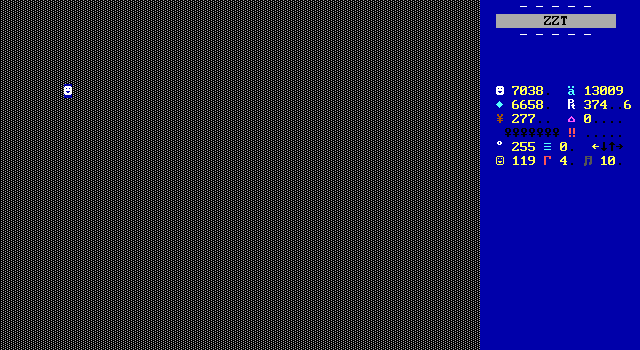
The score became positive again.
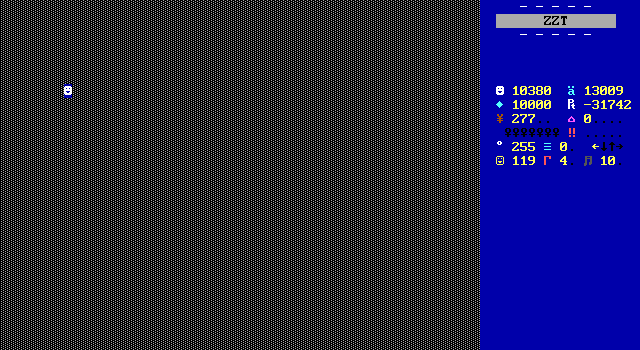
The score became negative again.
Frankly, I don't think I should ever have my opinions taken seriously ever again after this. I relished in the fact that I was recording my playthrough. I couldn't wait to put in the description "Hey gem collection starts at this timestamp and ends at this timestamp". Now posting that video is going to be the biggest self-own of my life.
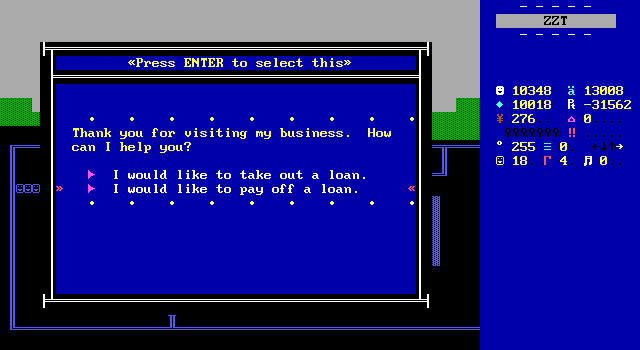
But hey man, 10,000 gems is 10,000 gems. I just took nine minutes to get them instead of grabbing a single object. In hindsight, I don't know why I had the foresight to look up #take gems 10000 but didn't then think to see if there was a corresponding #give gems 10000.
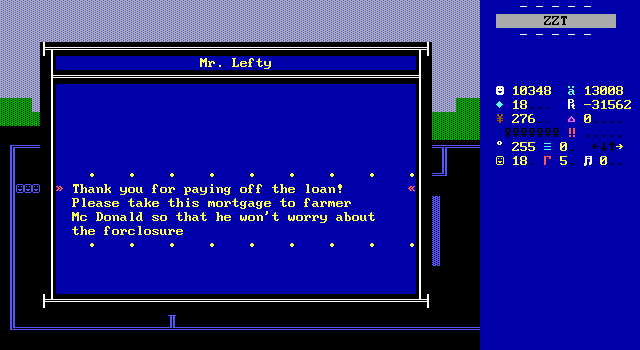
Walking back to Lefty's loans, cash in hand, at least I was ready to end the game. There isn't really much fuss about how you got the money. Lefty asks no questions, and who wouldn't with a bag of 10,000 gems placed on their desk?
It's worth pointing out that when I got the money, my first instinct was to give it to MacDonald and not Lefty directly. Doing this does provide some supplementary dialog telling you bring it to Lefty's. The walk from main street, to MacDonald, to Lefty's, and then back to MacDonald's is, on the surface, as tranquil as the travel agent said it would be. The silence outside was drowned out by the constant "Are we there yet?" that was looping in my head.

Though both objectives were completed, Shapiro and Babyak have one final challenge before the game can come to a close. Since both the gems and the pitchfork can be completed in either order, there needs to be somewhere else players must go to reach the end. That place is here, a maze made of purple keys just west of the barn.
"Purple Pete" who stands guard, doesn't check for either the pitchfork or deed to the farm. He actually looks to see if the player listened to the early advice and acquired a towel. If so, they may pass, otherwise the game ends on the spot.
Pete is nice enough to provide a warning to only speak to him again if you're a proven adventurer, but not so nice as to suggest having a towel. At least players that wander to this somewhat hidden screen (the man in the barn says to head here if you do the pitchfork quest last) won't have the misfortune of touching an object for the first time and dying for it.
His maze is busted though. There isn't an actual path that lets you reach the exit to the next board. You can pick up one purple key to tear down a wall, but with no doors to remove the key from your inventory, you won't be able to get deep enough inside.
An oversight still allows players to complete the game. The second screen of the maze is also made of purple keys in the shape of a spiral. As the first board lacks a bottom border outside the maze, you can just head south from the forest section, grab a purple key by entering the board, and then proceed to the rest of the game. Saved by a technicality.
Oh, and if you do talk to Pete anyway and pass his towel check, he turns all the forest tiles into gems, in case you want to pick up another 1,000 or so gems off the ground.
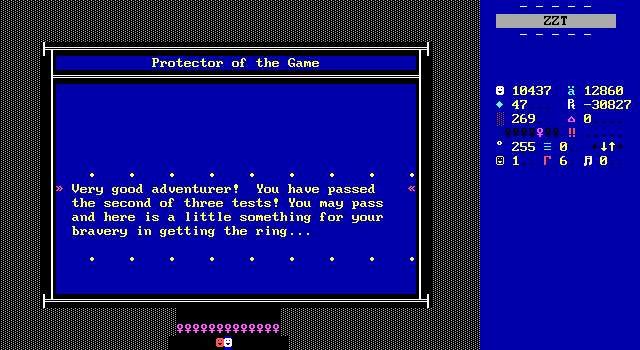
A second guardian lies at the end of the spiral, and while there isn't a bottom border here, there is a proper border on top of the adjacent board so the same trick won't work twice. This one checks for the ring given by McDonald after providing him with the deed. The penalty for getting this far without the ring is that you gain 100 health and then lose 100 ammo and 50 torches. Yeah, why not?
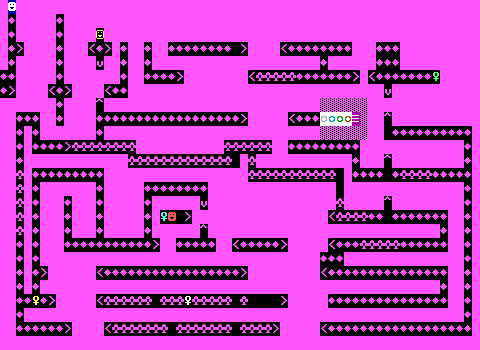
The final checkpoint is in the middle of a transporter maze. A leftover debug object up top sets all three flags checked in the purple space when touched as well as providing supplies that are beyond useless at this point. There's a possibility that this was added by somebody else after the fact, making this game a re-save, and its November 1991 date later than the day it was actually finished, but unless an older copy somehow surfaces, there's no way to prove it. More than likely it was put there by the developers to test the end of the game.
A number of boards are kind of all over the place within the world, suggesting edits and revisions as the game was developed. This is the third purple board, which is called "Purple II". It is the first of the purple boards in the world, which are ordered "Purple II", "Purple I", "Purple 0" and "Purple III". And let's not forget earlier the green board was titled "purple" as well.
As a transporter maze, it's one of the more tolerable kinds of maze out there. The paths are littered with yet more gems, but those serve as a good indicator of paths the player hasn't managed to reach. The path through the maze will eventually bring players either to one of four keys or the exit doors, giving them their goal. The ruffians are kind of a pointless inclusion, impossible to miss in in halls that are never more than one tile in size, and often cushioned by gems that can be shot to ensure no gambit of being able to grab the gems and run away.
This entire purple section of the game feels out of place. It feels very much like the authors were just trying to come up with more boards for the sake of not ending the game. This is a common criticism of quite a number of ZZT games over the years. Authors tend to think that more is better, not realizing that they've said all they need to already.
Here it's particularly egregious. No last minute new goal or plot twist is introduced. The pitchfork is safe. The loan is paid off. What are we supposed to get out of dark mazes and spirals that play worse than what's come before it, and now lack motivation to explore them?
One final checkpoint detects the pitchfork, turning any remaining ruffians into gems and any solid walls into fakes. The authors were wise enough to wrap the exit in normals so no being sneaky about key collecting. Except in the many instances across the game where locked doors can be worked around.

Oh? Word.
It's a room full of gems!!!!! (And bears.) There is nothing to say about this.
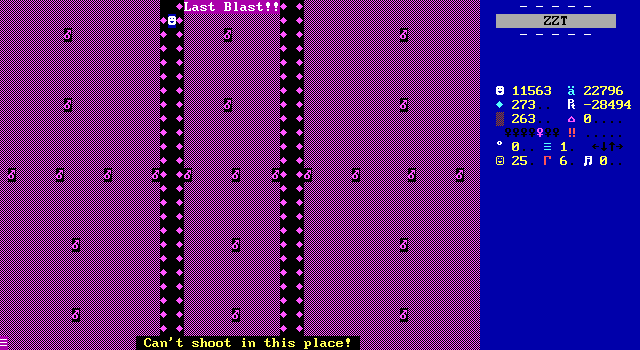
I am going to take a nap. You can blow up the bombs to reach more bombs to reach the passage out if you want.
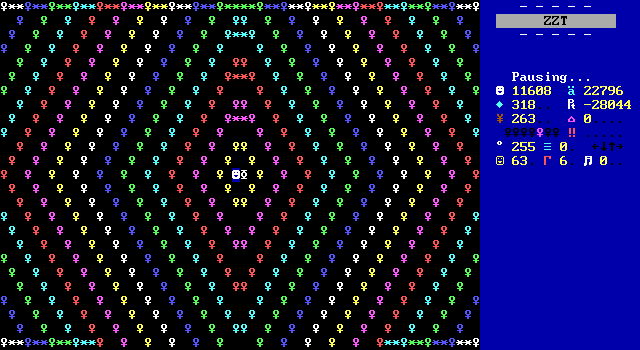
Oh! Okay, actually this ending screen is lovely.
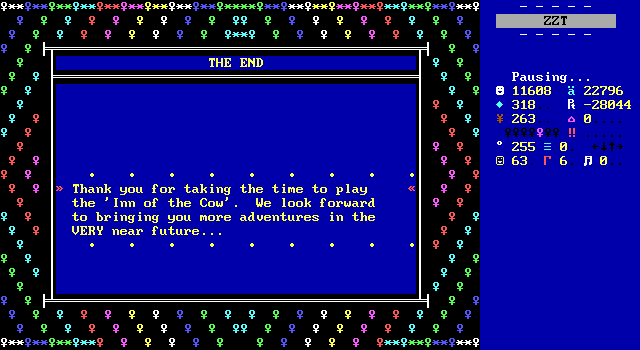
Inn of the Cow is the sole release credited to these authors. I have to wonder if they ever did make more ZZT games. Lord knows this one had problems, but you only get better with every mistake.
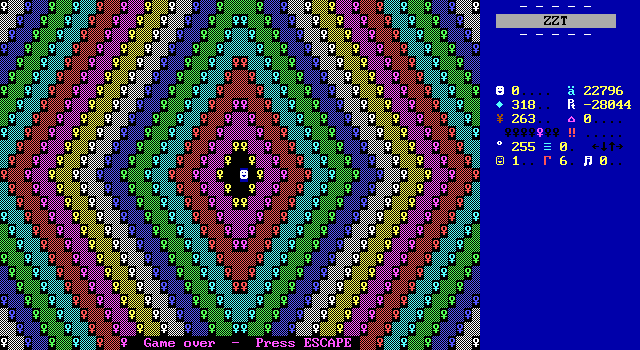
If your score is negative, ZZT won't open the high score prompt. I was hoping the check would have just been to see if it was a non-zero value. I wanted my -28,000 points to be recorded.
So, yeah, not much of an ending either.
Final Thoughts
I wish I didn't collection 10,000 gems by holding down the up arrow.
Okay, but besides that:
Inn of the Cow is a messy game that has a number of problems that make it unappealing to play. The board connections are frequently unclear, sometimes one way, and often only work from specific spots. SolidHUD was a huge time saver here that certainly wasn't around in 1991. Passages take players all over the place, and if it's to an area players haven't been to yet, they can easily take longer routes to get to a board they need to revisit.
The gameplay is not bottom of the barrel. This is still considerably above your pick of yellow bordered AOL-era games. Supplies are undoubtedly sufficient to get through any obstacles, albeit to a degree that there isn't any challenge to be had here. Most of the action packed boards are the ones in the zoo which has no purpose other than being a backup source for not having enough gems, which is almost unthinkable in this game. The outdoor environments rarely place creatures on the main path making almost all of the game's shooting avoidable.
Now you could still make it compelling even if you don't have to do it, but the layouts are generally uninteresting pockets of lions or dark rooms with too much going on. A number of these screens start with the number of statted elements maxed out making it awkward to get a starting foothold when you can't keep many bullets on screen. The only real exceptions are the centipede board leading to Lefty's which is solid and the Whirlpool derivative that is uninspiring, though functional. The game's action won't win people over.
Puzzles are lacking as well. The red keys for the milk jug count for something, but it's clear enough how to get to any particular passage. There's only the element of trying to get to every single one of them with the keys provided. The moment the player realizes that some of the passages are nothing more than warps to previous boards, the solution becomes finding the right passage and not caring about anything else.
The pitchfork slider puzzle is well intentioned, and I'm not sure if I solved it properly. If I did, then it's kind of a janky design where solving it feels like breaking it. If it's not, then it's easier to break than solve.
Beyond that, all that's really left of the game is the writing. The plot may not be presented well, but it's a good jump start to an adventure. I enjoyed that your goal wasn't a selfish one. The player helps MacDonald out out of the goodness of their heart, and perhaps an interest in adventuring. When the game is over, you're effectively where you started, but the residents of Bossyville are thankful for your visit. It's a good step up from purple key collecting, easily on par with the plots of several ZZT's Revenge games.
I was expecting more jokes though. The DESC.SDI file in the zip describes it as a "hilarious ZZT game". This file is dated nearly two years later, and may not have been written by the authors. Humor is definitely there. You have the vendors, and the cow themeing (cows were just funny in the early 90s for some reason), but you don't have much outside of the initial few boards.
It's a rough one, like so many others. It's very clear why this didn't wind up winning Sweeney's contest in some form. The game is just barely more grounded than the "editor playaround" games I've come across that are more about the author seeing what the editor lets them do than making a game for others to play with it. The odd board titles and unusual order of things makes me think that this game was that at first, and slowly did evolve to become a little nicer. The authors are clearly proud of what they came up with, seeing as how much of it repeats with slight variation. Inn of the Cow is the kind of game where what I want after finishing it is to see what came next. There's still a lot of game design principles to be learned, and I hope the duo continued to create things, games or otherwise.
As a rare 1991 world, it's a good reminder that the quality seen by ZZT's early authors isn't a given, and that ZZT has always been a learning process for any game developer. There's little to recommend here, but it would be really unfair to Shapiro and Babyak to call it a bad game. There were no expectations for what a ZZT game should be, and little to reference when creating one. It's an experiment that I'm glad was ran at least. Not every ZZT game is made expecting to be published by Epic MegaGames, or even shared with an audience. This one is at the very least an interesting artifact that helps shape our perception of what a ZZT game in 1991 could be.

